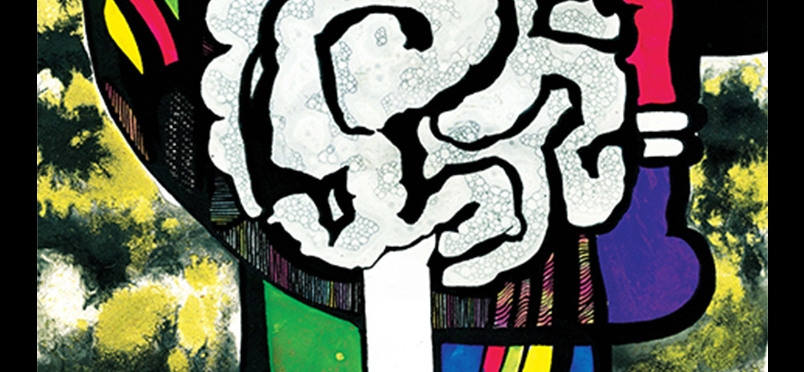| addiction
Pain and Cravings…in SUD Caregivers?

“…the same thing is happening in the brains of the people caring for those with addiction…”
Newswise — It’s no secret that substance use disorders (SUDs) can negatively impact the individual struggling, even putting their life in jeopardy.
“For persons with SUDs, their brain is telling them this lie that, ‘You’ve got to use to stay alive,’” said Sterling Shumway, chair of the Texas Tech University Department of Community, Family & Addiction Sciences and director of the Institute for the Study of Addiction, Recovery & Families.
Likewise, groundbreaking new research now indicates that the same thing is happening in the brains of the people caring for those with addiction.
“To further understand the etiology of SUDs and their associations with family systems, research must expand beyond examining the individual struggling with an SUD,” said Shumway, co-principal investigator (P.I.) for the ongoing project. “This includes research that helps us understand the neurological impact of stress, fear and the impairment found in the family system.”
The original hypothesis was that if the person struggling with an SUD’s brain is compelling them to use as a survival mechanism, perhaps the family member’s brain is doing the same thing as it relates to their loved one’s survival, thus leading to the mostly ineffective and compulsive attempts to rescue their loved one.
“It’s really first-of-a-kind research,” Shumway said, “looking to see if the person and their family member have become similarly, what we call, ‘co-impaired.’”
Looking inside the brain
Over the last four years, Shumway and co-P.I. Spencer Bradshaw, director of the Center for Addiction Recovery Research and an assistant professor in the department, have been using functional near-infrared spectroscopy (fNIR) to monitor reactions in the frontal cortex of both those in recovery from an SUD and family members as they participate in a research protocol presenting certain audio and visual cues meant to stimulate the prefrontal cortex (PFC).
“For the person who struggles with alcoholism, this protocol involves sounds and a variety of images that evoke strong emotional responses, including images associated with alcohol. We look at how their brain lights up differently in response to these various images,” Shumway said. “When family members come in, they aren’t presented a picture of a glass of alcohol, they see instead a current image of their loved one seeking recovery. That’s what makes this research groundbreaking, in that a family member’s PFC lights up in a similar way when looking at their addicted loved one as the PFC of someone with an SUD when looking at their substance of choice.”
When the fNIR results showed that family members often exhibited similar impairment and decision-making difficulties as those with an SUD, Shumway and Bradshaw realized they needed to look deeper inside the brain to explain this phenomenon.
“This is the next step in our research: to look at the family member brain at the level of the midbrain – a much deeper, more primitive part of the brain – and compare it with the brains of those struggling with an SUD,” Shumway said. “We want to know if a similar process is also occurring there with respect to these deeper brain structures and their interaction with the PFC.”
Now, with the help of the Texas Tech Neuroimaging Institute, the two are using functional magnetic resonance imaging (fMRI) to do just that.
“What comes from the midbrain is what causes addicts to use – it’s this intense pain associated with craving. Craving is the means by which the brain compels a person to do something they wouldn’t normally do as part of a survival response – that is, to use despite harmful consequences,” Shumway said. “In relation to a person struggling with an SUD, their brain is telling them, ‘You must use drugs and alcohol, or you’re going to die.’”
This message becomes so intrusive that it overrides the more rational frontal cortex, which is attempting to get them to consider the negative consequences. Unfortunately, when the disease of addiction is present, the midbrain wins the battle.
“With family members, particularly those who’ve been fighting the longest to keep their loved one alive, we believe similarly that their midbrain begins to compel them toward behaviors that may enable rather than resolve SUD behavior,” Shumway said. “In other words, they’re reacting to keep their loved one alive. They may know it’s not helping, but they’re going to do it anyway just like the person with an SUD is going to find and use their substance. This, because the midbrain is requiring it of them out of a perceived need for survival.”
Testing the hypothesis
Shumway and Bradshaw will use the fMRI to examine different parts of the brain, how they are connected to one another and which parts are being activated by different activities or presentations.
“Brain structures, their connectivity and their functioning are key to what we now understand about the brain of the person...
Read full press release here.
Other Categories:
Did you enjoy this article?
Subscribe to the PAINWeek Newsletter
and get our latest articles and more direct to your inbox
